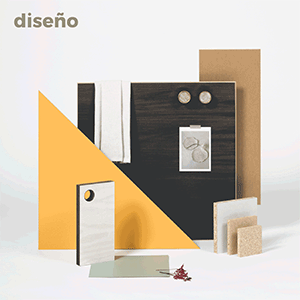We’ve all heard of the DIY movement and, before that, arts and crafts. The latter was a craze that began in Great Britain at the end of the nineteenth century and was led by the multifaceted William Morris, who was obsessed with making art a part of our homes and daily lives instead of just something you see in a museum. But if there’s one thing in today’s world that is capable of combining pure aesthetic joy with practicality, usefulness, functionality, and making things by hand, it is neo-craftsmanship: a whole world of creations by modern artisans who use their workshops to modernise and promote ancient techniques by applying new technologies that help shape their work without changing the basic processes of their respective trades.

What is neo-craftsmanship?
It might seem simple, but this pairing of innovation and traditional art has taken things to another level by creating an unprecedented hybridisation of processes. The combination of artisanry and industry, manual and machine labour, and tradition and technology forms part of the resurgence of homo faber by bringing together the techniques of handmade production and industrial design methodology, as well as using the springboard provided by new tech and digital tools like 3D printing, computer-assisted design or CAD, and laser cutting. Neo-craftsmanship has actually seen both worlds adapt, allowing them to exist side-by-side without either one having to sacrifice their defining characteristics.
New technology can assist with artisanal labour, even facilitating processes that would otherwise require greater physical effort from the creator. It also allows them to plan a piece before actually making it. In his 2008 essay “The Craftsman”, sociologist, researcher, and pragmatist Richard Sennet wrote that “To make is to think”. One could say that any object, even those produced industrially, began as prototypes that had been created by hand using craftsmanship.
The strength of artisanal art
We all know that the market changes, as do consumer habits, and in the post-COVID world, we are all turning back to products that are more natural, traditional, carefully produced, and personalised. We want products that have soul, that tell a story, and connect us to our roots. The number of loyal customers committing to buying products based on this ideology is increasing every year. Not too long ago, all signs pointed to the fact that artisanry in its many forms was on the verge of disappearing; yet now, the exact opposite is happening. With the strength of “artisanal art” and developments in materials, tools, ways of working, and design, a new generation has taken it upon themselves to pass on this ancient knowledge.
Ver esta publicación en Instagram
Is industrialisation the same as craftsmanship?
However, the symbiosis between craftsmanship, design, and industry does not lead to mass production; in fact, the opposite is true. One of the main characteristics of these neo-artisanal objects, which are made by hand with the help of technology, is that no two are ever alike. Their production requires time, dedication, and knowledge, and they bring together different things, including art, tradition, design, individual creativity, innovation, originality, quality, and excellence in the pursuit of balance. They are always approached with the utmost respect for the ancient craft, rather than process automation. They are the antithesis of perfect manufacturing.
Sustainability calls the shots
Neo-craftsmanship also implies a clear shift towards sustainability. The new generation of master craftspeople are conscious of the environmental impact of human activity and endeavour to create pieces using natural, noble, and organic materials including timber, leather, precious stones, clay, glass, and textiles.
However, there are other ways to create. Young Basque designer Laura Herrero, who won the Samsung EGO Innovation Project 2019, has a clear preference for experimentation and technology when it comes to fashion. The pieces from her first collection, called Syntsis, were created using digital production, 3D printing on elasticised fabrics, ‘smart’ elements like superimposed thermochromic dyes and pigments that reveal “hidden” colours when the temperature changes, and integrated circuits that adapt to shape-memory materials in order to change the shape or the size of the garment. She now works for Inditex as a trend researcher at Bershka.
Ver esta publicación en Instagram
How to make things (and to live)
It’s pretty obvious that neo-craftsmanship is making waves right now. The Dsnú design studio in Madrid has their own artisan workshop where they have been working with architect and jewellery maker Ana Martínez and plastics artist and ceramicist David de Felipe since 2016. They use 3D printing as well as other new techniques, and their pieces, including jewellery, vases, and sculptures, are designer pieces that, as they say on their website, combine their “knowledge about different traditional techniques and materials with a modern approach”.
Ver esta publicación en Instagram
Studio Simone Post is also bringing something new to the table, something that has been exceptionally well-planned and executed. They worked with Finsa on an innovative idea for their products through Envisions Design-Lab, and the Rotterdam-based designer and her team just created stunning two window displays at the Ginza Maison Hermès store in Tokyo, made entirely of marshmallow candy.
This year, the prestigious fashion house is working with the theme of lightness and, upon hearing this, the first thing that came to the modern artisan’s mind were these sweet spongy treats. Inspired by this, Post collaborated with a Dutch marshmallow maker to turn it into a material, similar to a thick wire, which was then used to make all the furniture and accessories that can be seen through the windows: a lamp, a rug, a mirror, a clothes rack, a table, an ottoman, and a plant.
Ver esta publicación en Instagram
Here is another example of reinvented and ground-breaking craftsmanship by Studio Simone Post:
Ver esta publicación en Instagram
Sara Sorribes is also at the forefront of the neo-craftsmanship movement. A third-generation glass artist, she is taking this material to the next level with her modern designs. She created this sculpted lamp for Bohème Design:
Ver esta publicación en Instagram
Other fields in which creativity and technology are joining forces includes that of artisan tiles; 3D clay printing, used by Argentinian artist Guillermo Sipituca to make vases; and ceramics, including the impressive work of Alberto Bustos, a sculptor from Valladolid.
Ver esta publicación en Instagram
Ver esta publicación en Instagram
Ver esta publicación en Instagram
An innovative approach to making products using textiles is at the heart of the work of Bilbao-based artisan and textiles creator Soledad Santiesteban, Lugo native Santiago Besteiro, who works with leather to make vases, and Irish corset-maker Sarah Ryan:
Ver esta publicación en Instagram
Ver esta publicación en Instagram
Ver esta publicación en Instagram
Inés Sistiaga is another great example. She is a designer and textiles research, as well as a university lecturer, who splits her time between Spain and the Netherlands, working on the study of materials and their structures with other visual languages and new ideas through artisanal and digital technology as a knit programmer. She also recently collaborated with Zara Home on design and textile development, yet another example of the interest multinational corporations are showing in incorporating artisan products into their ranges.
Ver esta publicación en Instagram
Ver esta publicación en Instagram
Before working for Inditex, Sistiaga worked at the studio of Lucas Muñoz, another designer with bases in Madrid and Holland and who works with construction materials and upcycling design. His artisanal, personal, experimental, and creative projects reinvent everyday objects. He has made chairs from ventilation tubes, lamps from jars and bricks, skateboards from rocks, stools from stones, and doorknobs from electrical wires. His pieces have been exhibited at the Salone de Milano and the London Design Festival, and his renovation of the Mo de Movimiento restaurant in Madrid won him the Dezeen Award 2021 as well as the FRAME prize, both of which were for sustainability:
Ver esta publicación en Instagram
Ver esta publicación en Instagram
Redeiras Artesás is also part of this new artisan wave. Rosa y Chus, two netmakers from Corme on the Death Coast, have brought their ancient skill to the world of accessories, fashion, and decorative design without losing the connection to its origins, with a clear focus on the environment and recycling:
Ver esta publicación en Instagram
Neo-craftsmanship on social media
Neo-craftsmanship is another production model. It can’t compete in the global market; it doesn’t have the resources, nor does it use the same methods. But it has adapted to modern channels of communication and its makers understand the importance of using social media to show their work and connect with the public for marketing purposes.
A poor or non-existent relationship with the digital world was actually one of the biggest challenges facing traditional craftsmanship until recently. But the new craftspeople no longer create things in isolated workshops, cut off from the world. They know that they need a good brand, to build a reputation, to dedicate time and effort into digital communication, and to create quality content that helps people buy the products they make.

The new artisan wave is perhaps the best way to protect traditional skills and to remember the words of Mexican poet Octavio Paz: “The thing that is handmade has no desire to last for thousands upon thousands of years, nor is it possessed by a frantic drive to die an early death. It follows the appointed round of days, it drifts with us as the current carries us along together, it wears away little by little, it neither seeks death nor denies it: it accepts it. Between the timeless time of the museum and the sped-up time of technology, craftsmanship is the heartbeat of human time. A thing that is handmade is a useful object but also one that slowly ages away and is resigned to so doing; an object that is similar but not identical. The craftsman’s handiwork teaches us to die and hence teaches us to live.”




